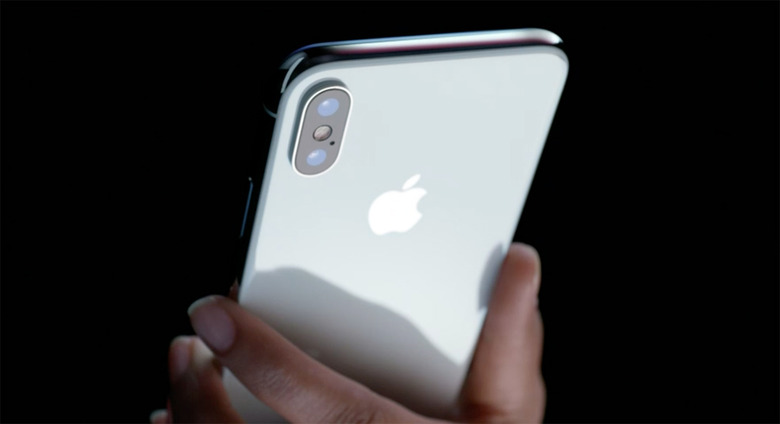Why Can't iPhone Owners Just Accept The Fact That Google Can Save Them?
There shouldn't be much question at this point that Apple tends to put a bit more thought into its products than rivals. Perhaps that's why so many consumer electronics companies have copied Apple devices over the years. The good news is Apple has forced other companies to up their game, and up it they have. Android phone makers now put far more time and energy into product design and unique features than they ever have in the past. Remember how ugly, cheap, and plasticky Samsung's flagship phones used to be? Now they're stunning, and Samsung fans have Apple to thank; Samsung simply couldn't continue to get away with releasing crummy plastic phones while Apple sold sleek iPhones made of glass and metal.
Apple doesn't just put more thought into its products than rivals, however. It also seems to put more thought into how to make money. A perfect example is Apple's move to add exclusive features and upgrades to its more expensive iPhone Plus models, thus adding further encouragement for consumers to opt for higher-margin iPhones. Again, Samsung will finally catch up with this smart strategy this year when it launches the Galaxy S9 and Galaxy S9+.
Another example is storage. Unlike most other smartphone companies, Apple refuses to add microSD support to its iPhones. The main reason for this, of course, is that it forces people who want more local storage to buy more expensive, higher-margin iPhone models. While it's a brilliant move on Apple's part, this is an instance of a smart business strategy that is decidedly anti-consumer. What many iPhone users still don't seem to realize or don't want to accept, however, is that Google can save them from spending that extra cash on an iPhone with more storage.
Google is one of Apple's top rivals in a few key areas. Of course, Android is the one most people focus on since Apple and Google own the two biggest mobile platforms in the world. Google isn't a platform company, however. It's a services company and an advertising company.
Android exists as a delivery mechanism for Google's various software and services, and it serves its purpose quite well. But it would be silly of Google to confine its services to Android. Google wants access to as many users as possible, so it supports every popular software platform it can. That obviously includes iOS. Google would never confine its services to Android like Apple does with most of its software services. Apple is a hardware company and it uses software and services to lock customers in. In that way, Apple and Google are opposites.
That brings us to one of my personal favorite Google services, Google Photos. For those unaware, Google offers a service that includes unlimited storage for high-quality photos and videos for free. Well, "free" — the price of most Google services is access to your data, of course. That's a price many people happily pay, myself included.
iPhone users have been running out of storage space ever since the first iPhone was released more than a decade ago. In 2017, there are two main culprits. The lesser issue is typically the Messages app, since many people are unaware that all those photos and videos they receive are stored locally on their phones. That often adds up to gigabytes upon gigabytes of storage that gets gobbled up by media that will never be viewed again.
The bigger issue is all the storage that's eaten up by photos and videos captured by the iPhone itself.
As smartphone camera quality continues to improve with each new product generation, photo and video sizes get bigger and bigger. Apple's new high-efficiency photo format was developed to help the issue a bit, but it makes sharing photos with anyone who doesn't also have an iPhone a huge pain. (Don't worry, you can disable it by going to Settings > Camera > Formats and selecting "Most Compatible.")
But Apple's HEIC photo format only does so much. People still often take hundreds of new photos with their iPhones each week, and 4K video files can be massive. Even if you pay an extra $150 to bump up your iPhone to 256GB of storage from 64GB, all those gigabytes still tend to disappear quickly. That's where Google Photos comes in.
Apple's iCloud service is nifty, but it's not free and it's actually not a very good solution to this problem. iCloud is designed to synchronize photos and videos across devices by default, which means these massive media files now occupy space on several devices. Google Photos is different. With this smart solution, you can upload all your photos and videos to Google servers and then delete them off your phone. You'll still see all the thumbnails in your Google Photos app and you can browse through them anytime you want, then tap on a photo or video and it will quickly be downloaded and displayed. You can also take advantage of Google's AI features like automatic smart album sorting, facial recognition, object recognition, and more. Apple has adopted some of these features in its own photos app, but Google's AI continues to be vastly superior to Apple's.
To this day, I continue to see friends and family get the dreaded "Cannot Take Photo" error because they're out of storage, or the "Not Enough Space" error when they try to update iOS. Emails also come in all the time from people complaining about how quickly they run out of storage. Google Photos is the answer. Download it. Use it. 📸
